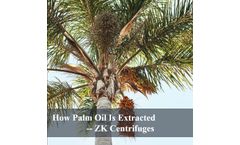Olive Processing Articles & Analysis: Older
6 articles found
The usual plant oil extraction and separation process (e.g. olive or palm oil, tea seed oil, etc.) involves the extraction of oil-bearing plant parts (seeds, fruits, skins) that are squeezed and milled. ...
The nutritional properties of olive oil can be attributed to its oleic acid and phenolic compounds content, acting as natural oxidants to prevent human diseases. In particular, hydroxytyrosol has an anti-inflammatory action similar to omega 3 fatty acids from fish oil. The olive oil production was conducted by two extraction procedures: first, a two-phase ...
In this study, an integration of three processes including coagulation, acid cracking and Fenton-like was evaluated to treat OOMW. ...
The production of olive oil generates two kind of waste waters: RINSING WATERS: the quantity is subject to change. It can be re-circulated, after the settling to remove the solids, or discharged directly. SLUDGE: vegetation water with additional water, whose quantity is subject to change. In case of traditional oil mills, the hot additional water flows to the inlet of the centrifuge. Part of ...
Problem: The aerated ponds were producing a foul odor & the chloride content of the aquifer was increasing to a level endangering the water quality. Solution: A Hydrocal CAF system is installed to treat the pit water only. This stream, which aligns the olives to be pitted, is highly contaminated with oil, grease, and ruptured olive tissue. The separate treatment of this stream alleviates ...
We will concentrate on the description of a wastewater recycling/reuse system that was implemented at an olive processor plant in California. Olive processing produces large amounts of high strength wastewater with significant amounts of suspended solids, oil and grease, dissolved organics and salts (brine and caustic). ...





